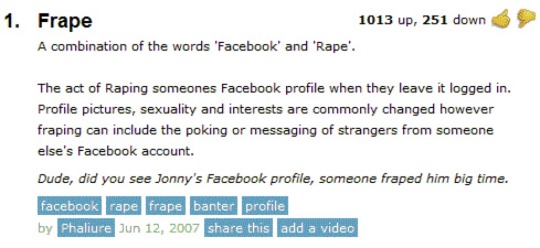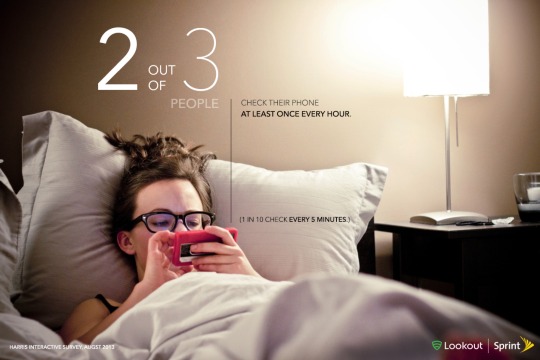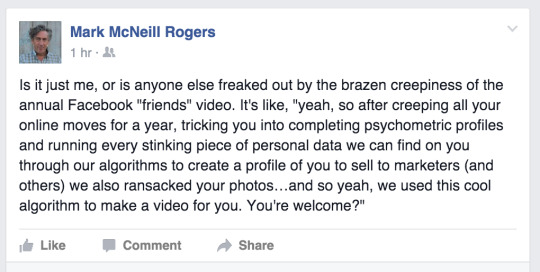Don't wanna be here? Send us removal request.
Text
Studying English language in the age of "Post-truth"
With all of the misinformation that seems to be circulating online nowadays, it is said that we are living in a “post-truth” world, a world where facts don’t matter, and where people make important political and personal decisions based on “fake news”, rumours, and their own feelings. In fact, Oxford Dictionaries has named “post truth” the 2016 word of the year.
In an era of “post-truth”, it may be tempting to dismiss the importance of studying language. After all, if nothing is true anymore, what’s the point of paying attention to what people say or write. But actually, the decline of truth in mainstream and social media, and in political discourse makes studying language more important than ever before. This is because current theories in English Language Studies and Applied Linguistics can help us to understand why people are inclined in believe seemingly outrageous things they read online, and can help us to spot fake news stories and recognise the strategies people use to try to trick us into engaging with them.
Propaganda and fake news are not definitely not new phenomena. They have been with us for years. And it doesn't take the Internet to spread fake news. In fact, one of the most influential recent pieces of misinformation, the claim that Brexit would result in £350 million being channelled to the NHS, appeared on the side of the bus. What is different about misinformation on the Internet is the way the information architecture of digital media affects both what we read and how we read.
Scholars of reading have found that when people read online, they are more easily distracted, and spend less time on a particular page. This can make us less critical when we are reading online, because we are less likely to follow an argument to its conclusion. Online we are used to reading short form texts, such as tweets and status updates, rather than long form texts which present reasons and evidence for statements. When it comes to fake news, most of the time, people simply read headlines as they scroll down their Facebook Newsfeeds. They usually don't read the news stories themselves, and of course headlines are usually just assertions which are difficult to verify without more information.
But the more important way that the Internet affects reading is the way it changes what we read. The difference between reading news in a newspaper, and reading it on a social media site, is that on the social media site, the news that you read has been selected for you by your friends, many of whom may have similar opinions to you. The algorithms of sites like Facebook and Google are also designed to select which status updates appear at the top of your newsfeed or which websites appear first in a list of search results based on your past behaviour: the kinds of posts that you have "liked" or the kinds of search results you have clicked on in the past. And so what you read on the Internet is often likely to reinforce opinions that you already have rather than introduce information that challenges those opinions. The writer Eli Pariser calls this phenomenon "the filter bubble". What this means is that the information we get online is "filtered" based on our pre-existing beliefs.
So what does this have to do with "fake news"? First of all, we are more likely to believe news that confirms our existing opinions about a particular issue, particularly if it appears in the context of a whole lot of other news which also confirms that opinion. Psycholinguists, people who study language and the mind, have shown how the way we comprehend what we hear and read can be affected by what we have heard and read immediately beforehand. They call this "priming". Sociolinguists, people who study language in society, talk about how people who belong to particular groups develop not just particular ways of using language, but also particular ways of interpreting what they hear or read, and when they interact, they reinforce these "norms of communication". When you read a piece of “fake news” on Facebook, you might be more likely to believe it, because it fits in with the opinions of the group to which you belong (in this case, your group of Facebook friends), you may also be more likely to share that piece of fake news with those very same friends, thus reinforcing those opinions. Some people might even argue that we are being "brainwashed" by the algorithms that govern what we read on social media sites and by our "like-minded" Facebook friends who keep sharing stories that reinforce the group ideology.
But we can't blame it all on Facebook and Google, or even on our friends. New research by applied linguists Carolyn Tagg and Philip Seargeant reveals that, for many people, the problem is not that all of their Facebook friends believe the same thing, but that their friends include people from different parts of their lives (classmates, relatives, co-workers), who might have lots of different opinions. They argue that the prevailing ideology of social media sites is conviviality; people want to be friendly, and avoid conflict. Because of this, people are much less likely to challenge what they might think is "fake news" posted by one of their Facebook friends. In other words, if you think something is true, you are likely to share it, but if you think something is not true, you are not likely to challenge it.
So how can we tell if something we read online is “fake news”. Of course, the best way is to read the article carefully, consider its source, and cross-check the "facts" in it with other sources. But there are also some clues in the language of "fake news" headlines. One field of English language studies called discourse analysis can help us to notice these clues. Discourse analysis is the study of the way different kinds of texts are put together. It can be used to reveal common patterns across texts. Texts that have similar patterns and similar purposes are called genres. "Fake news" headlines can be said to belong to a particular genre of headlines called "clickbait". Clickbait headlines have a common purpose – to get you to click on them so that their creators can earn advertising revenue. These headlines also have some common lexical and grammatical characteristics.
One thing that characterizes clickbait headlines is that they tend to contain words chosen to trigger an emotional response from readers such as epic, amazing, incredible, unbelievable, and shocking. for example:
Pope Francis Shocks World, Endorses Donald Trump for President, Releases Statement.
Internet researchers from Brazil and Qatar conducted a study in which they measured how likely people were to click on different kinds of headlines. They found that people were much more likely to click on headlines that expressed extreme (either positive or negative) sentiment, which they called "sentiment polarity".
Apart from emotional words, writers of clickbait headlines also sometimes personalize the content of headlines by using pronouns like you or your, as in the following headline:
BREAKING: Hillary Clinton To Be Indicted... Your Prayers Have Been Answered.
Another way clickbait headlines get people to click on them is by creating some kind of mystery or ambiguity. Many of us are familiar with clickbait headlines like:
Someone Gave Some Kids Some Scissors. Here’s What Happened Next.
A Gorgeous Waitress Gets Harassed by Some Jerk. What She Did Will Restore Your Faith in Humanity.
Such headlines normally consist of two sentences. The first sentence expresses something that happened or some state of affairs, usually involving some undefined person such as "some kids" or "a gorgeous waitress". The second sentence can be called the "hook". This sentence is designed to raise a question about what happened in the first sentence (e.g. “what she did” or “ what happens next”) and to promise the reader and emotional payoff if they click to find out the answer to the question.
As it turns out, many fake news headlines use this structure. Here are some examples:
WikiLeaks CONFIRMS Hillary Sold Weapons to ISIS... Then Drops Another BOMBSHELL!
IT'S OVER: Hillary's ISIS Email Just Leaked & It's Worse Than Anyone Could Have Imagined
Both of these headlines begins with a statement about something that supposedly happened, and ends with an ambiguous statement which adds mystery to the first statement. Of course none of these statements are actually true. But because of the emotional way in which they are expressed, the fact that they might confirm the worst fears or fantasies of people who belong to particular groups, and, the way they are grammatically constructed to manufacture curiosity, people are more likely to click on them or share them with other people.
The important thing to remember about fake news is that sometimes it doesn't even pretend to be real. Often, the purpose is not to get you to believe that the Pope supported Donald Trump or that Hillary Clinton is a member of ISIS, but rather, to create confusion and undermine your faith in all news. If we are living in a media environment in which so much of the news is fake, that makes it easier for politicians and public officials to dismiss any news that is unfavourable to them as "fake news".
2 notes
·
View notes
Link
0 notes
Link
Are selfies getting in the way of our social interaction. Has documenting an event become more important than experiencing it?
10 notes
·
View notes
Link
Is it true that young people are moving from broadcast to ‘narrowcast?”
What do you think the reasons are?
3 notes
·
View notes
Photo
I agree. There’s something quite disturbing about equating hacking someone’s Fb page to rape. At the same time, it raises an interesting question about the relationship between offline and online actions. One of the most famous early articles in computer mediated communication was called ‘A Rape in Cyberspace’ about a virtual rape in a MUD. You can find it here:
http://heinonline.org/HOL/LandingPage?handle=hein.journals/annam1994&div=44&id=&page=

My problem with the word “frape” is that, to me, it trivialises rape
4 notes
·
View notes
Text
my phone, my ipad, my laptop, my desktop, MY WATCH! :)
Question
How many devices do you own that you could post to tumblr from?
4 notes
·
View notes
Video
This is a fabulous analysis/critique of the ‘Like’ button. It’s both a simple and sophisticated tool of social interaction. On the one hand, as I said in class yesterday, it speaks to something quite primitive in us-- the need to groom one another. On the other hand, the low ‘transaction costs’ might be making this kind of online grooming more and more meaningless. Abigail raises some important questions here. Is the ‘Like’ button bringing us together or pushing us apart?
LNM: Communcative Apathy and The Like (get it?)
My first “vlog” in my series for this module. It’s not particularly eloquent, I know, but this vlogging malarkey is more difficult than I thought it would be. Maybe that could be a subject for another video? Anyway, let me know what you think!
Keep reading
4 notes
·
View notes
Link
Majority of parents worried about children's digital reading, survey finds http://flip.it/5pqem
0 notes
Text
How much does multiple simultaneous interaction affect how we communicate? Here's an article I wrote about it. It's a bit outdated but some of the points still hold https://www.academia.edu/2993495/Inter-activity_How_new_media_can_help_us_understand_old_media
Question
I didn’t realise that I was in about 5 active chats on Whatsapp of people I speak to every day! How many synchronous forms of interactions is everyone involved in?
3 notes
·
View notes
Link
0 notes
Photo
http://youtu.be/t1FMDBQWjvg

This doesn’t surprise me at all. I’m not gunna lie, I’m definitely the 1 every 5 mins when I’m having a boring day at home. Me and my friends all spend the mornings scrolling through all our favourite apps, and we all know the best app to check is snapchat, especially after a night out, just to see how embarrassing you were! I find out most of the world events through Twitter, what my friends have been up to through Facebook/snapchat and then a cheeky flick through Instagram to envy at random people’s dream lifestyles. To be honest I think checking through social media in a morning is our generations equivalent of reading the morning paper.
8 notes
·
View notes
Photo
This is definitely me. But I wonder what I did before my phone. I'm on a train now from Cardiff, but I haven't looked out the window once, because I'm staring at my phone. Will I ever know what the Welsh countryside looks like? Well, I guess I can Google it.

This doesn’t surprise me at all. I’m not gunna lie, I’m definitely the 1 every 5 mins when I’m having a boring day at home. Me and my friends all spend the mornings scrolling through all our favourite apps, and we all know the best app to check is snapchat, especially after a night out, just to see how embarrassing you were! I find out most of the world events through Twitter, what my friends have been up to through Facebook/snapchat and then a cheeky flick through Instagram to envy at random people’s dream lifestyles. To be honest I think checking through social media in a morning is our generations equivalent of reading the morning paper.
8 notes
·
View notes
Photo
Bumper called things like this contextualization cues: https://en.m.wikipedia.org/wiki/Contextualization_(sociolinguistics)

Now this is word of the year, I wonder if dictionaries will start trying to define each emoji. Is an emoji even definable? Or is it personal preference / situation dependent?
4 notes
·
View notes
